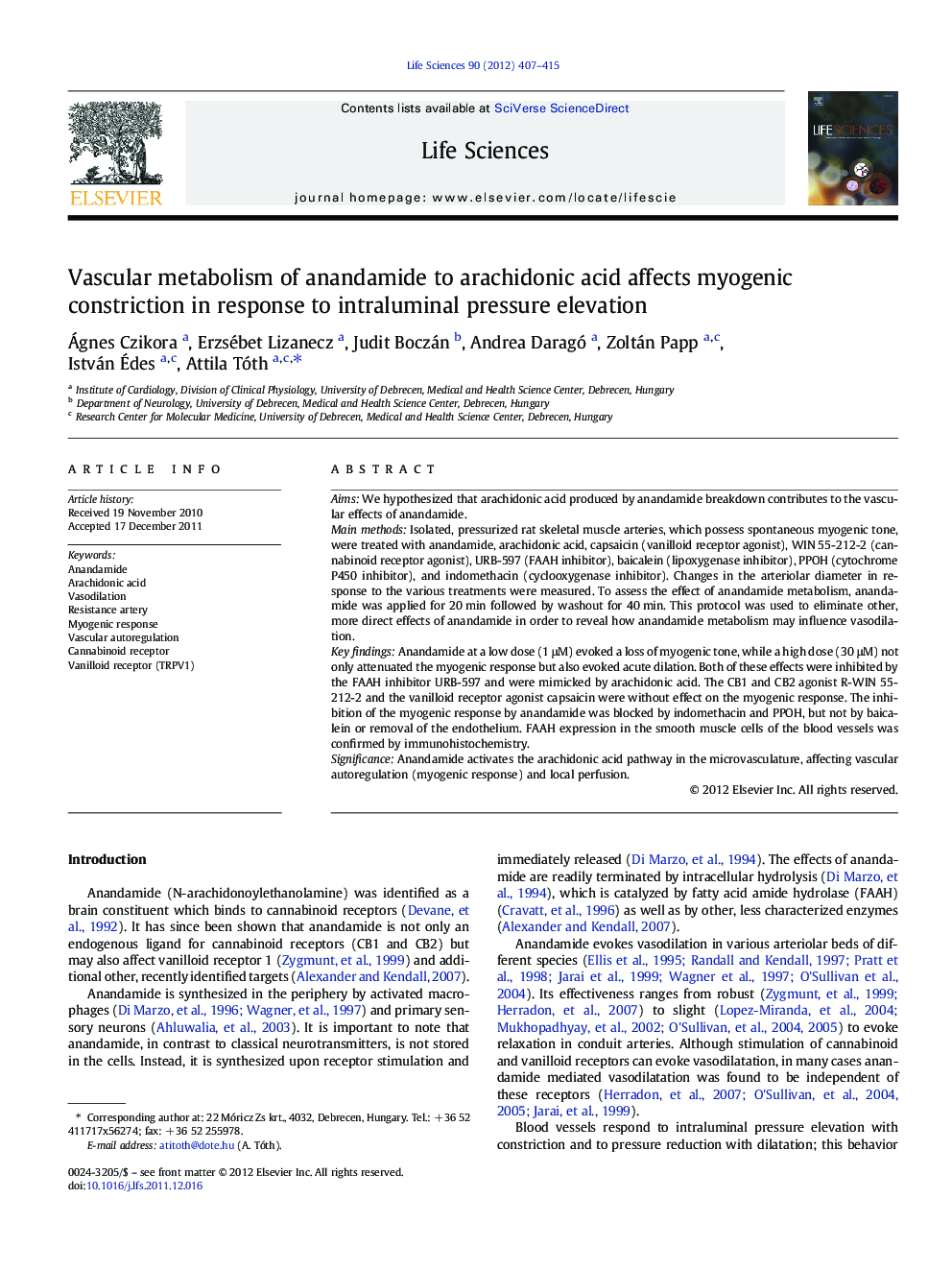| Article ID | Journal | Published Year | Pages | File Type |
|---|---|---|---|---|
| 2551793 | Life Sciences | 2012 | 9 Pages |
AimsWe hypothesized that arachidonic acid produced by anandamide breakdown contributes to the vascular effects of anandamide.Main methodsIsolated, pressurized rat skeletal muscle arteries, which possess spontaneous myogenic tone, were treated with anandamide, arachidonic acid, capsaicin (vanilloid receptor agonist), WIN 55-212-2 (cannabinoid receptor agonist), URB-597 (FAAH inhibitor), baicalein (lipoxygenase inhibitor), PPOH (cytochrome P450 inhibitor), and indomethacin (cyclooxygenase inhibitor). Changes in the arteriolar diameter in response to the various treatments were measured. To assess the effect of anandamide metabolism, anandamide was applied for 20 min followed by washout for 40 min. This protocol was used to eliminate other, more direct effects of anandamide in order to reveal how anandamide metabolism may influence vasodilation.Key findingsAnandamide at a low dose (1 μM) evoked a loss of myogenic tone, while a high dose (30 μM) not only attenuated the myogenic response but also evoked acute dilation. Both of these effects were inhibited by the FAAH inhibitor URB-597 and were mimicked by arachidonic acid. The CB1 and CB2 agonist R-WIN 55-212-2 and the vanilloid receptor agonist capsaicin were without effect on the myogenic response. The inhibition of the myogenic response by anandamide was blocked by indomethacin and PPOH, but not by baicalein or removal of the endothelium. FAAH expression in the smooth muscle cells of the blood vessels was confirmed by immunohistochemistry.SignificanceAnandamide activates the arachidonic acid pathway in the microvasculature, affecting vascular autoregulation (myogenic response) and local perfusion.
